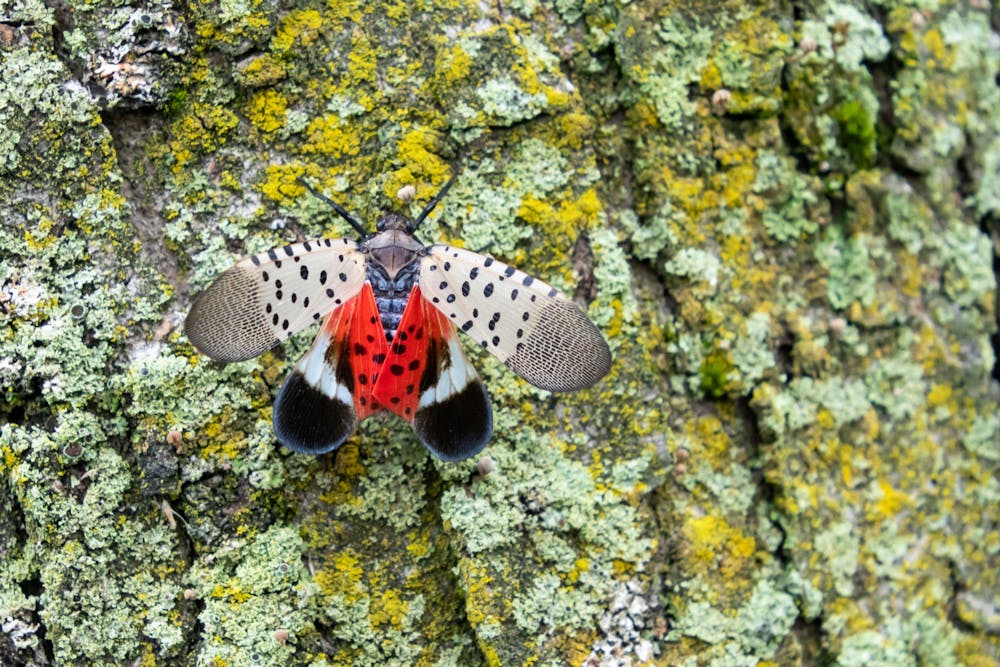Spotted lanternflies, a new invasive species with red wings and black spots, will arrive in Bloomington in the coming years, local business owners and environmental experts say. Native to southeast Asia, the insects are not directly harmful to humans, but they may hurt agriculture and businesses since they do not yet have a natural predator in the U.S.
Jim Bulter, who co-owns Butler Winery with his wife, said the lanternflies will reach Bloomington in one to two years.
He fears the damage they may cause his business. Since lanternflies suck energy from vines and changes the acidity of the grapes, it results in a smaller crop yield the following year and increased costs for producing and selling wine, he said.
Butler said the lanternflies’ damage extends beyond vineyards. He said they also produce honeydew when they latch on to plants, which can damage trees, back porches, and anything that produces sap.
According to the U.S. Department of Agriculture, spotted lanternflies feed on crops. Butler said the insects will specifically affect avocado and almond production in California, which will do harm to small producers the most. Farmers may have to spend more money getting producers from Europe due to the shortage of supplies in the vicinity. This could lead to shortages or increased prices for these products.
“If it gets there, you’re really talking big dollars,” he said.
Jesse Page, an employee at Thrasher Landscaping, a landscaping business in Bloomington, said spotted lanternflies cause problems for businesses like his that depend on trees. The insects kill decorative trees, as well as shrubs. To mitigate the lanternflies’ damage, businesses would be forced to raise their budgets for controlling the species.
Page said spotted lanternflies are “plant-hoppers.” This means they are insects that hop from plant to plant and are most harmful in large numbers. He said someone can easily mistake them as moths or beetles and may neglect to address their potential harm to infrastructure.
IU biology professor Armin Moczek said spotted lanternflies damage plants by poking holes in their vascular systems, which plants use to deliver water and nutrients to the rest of their body.
“It’s a straw,” he said. “What happens if you poke a hole in it? You can’t use it.”
Even though they are not harmful to humans, they reproduce in large numbers due to a lack of natural predators. However, some of their wings have been found without the body, which has led experts to think that birds in particular leave the wings behind.
Page recommends people bag the insect whenever they see one, take a picture and notify their local department of agriculture. One could also scrape their eggs off the bark once they are first laid to prevent them from hatching in the first place. He said insecticides have limited effectiveness on lanternflies because they are not specifically targeted for thate species.
While Page suggested people to kill lanternflies whenever they see them, Moczek suggests a larger-scale approach of breeding and releasing a type of wasp called parasitoids to kill spotted lanternflies. Even though the process takes years and does not eliminate them completely, it reduces their effect.
“It’s the best you can hope for,” he said.






